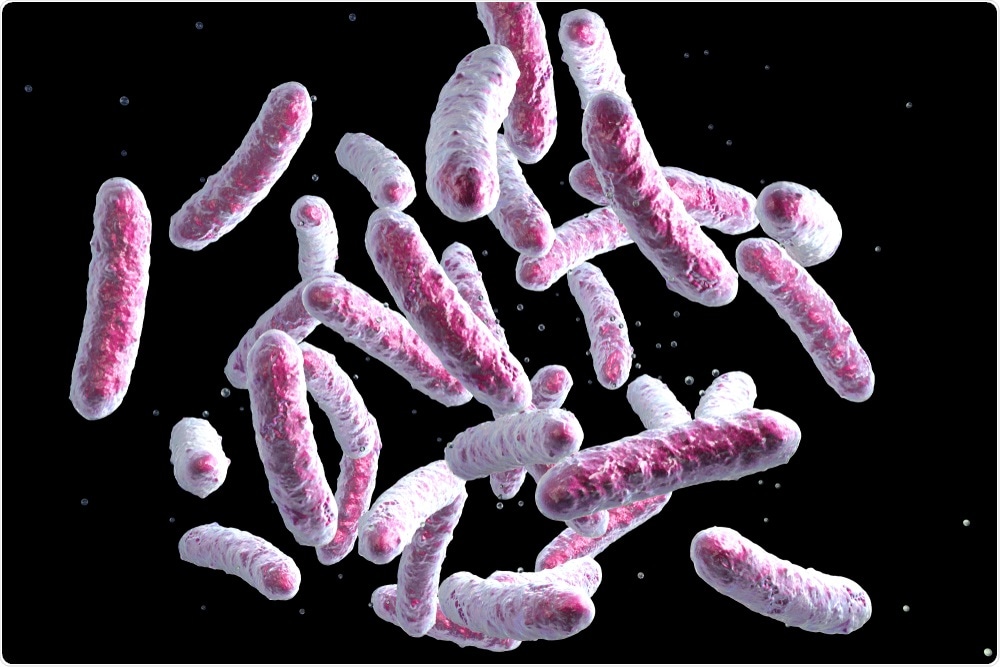European Congress of Clinical Microbiology & Infectious Diseases (abbreviated as ECCMID) is the world’s premier event for state-of-the-art topics in clinical microbiology and infection. The 29th ECCMID event was held between 13 and 16 of April (2019) in Amsterdam and featured various experts who presented their latest findings, experiences, and guidelines to an audience of more than 12,000.
This year, a multi-faceted program comprised of keynote lectures and oral sessions, but also interactive workshops, meet-the-expert sessions, extensive poster sessions, pipeline corner, and a wide array of symposia. This article aims to provide a brief overview of the key themes of this year's conference and update readers on current research.
 Harry Beugelink | Shutterstock
Harry Beugelink | Shutterstock
The keynote speakers at this year’s event included Professor Jean-Michel Molina from the University of Paris Diderot, Professor Ron Dagan, Head of the Soroka Pediatric Infectious Disease Unit, Israel, and Dr. Trevor Lawley from the Wellcome Sanger Institute, along with a host of others from a variety of countries.
Sessions focused on prophylactic approaches to HIV/STDs, hepatitis B and tuberculosis, as well as ancient DNA studies and novel transmission routes of commensal bacteria.
There was also a captivating keynote session given by Professor Ramakrishnan, who is a world-renowned researcher in of tuberculosis pathogenesis. Some of her findings using zebrafish model (presented for the first time at this conference) defined novel pathways that explained poor outcomes in the tuberculosis of the central nervous system (where mortality exceeds 30% despite the treatment) and identified relevant targets for host-directed therapy using re-purposed drugs.
Microbiome studies
In the session entitled “Microbiome across the lifespan”, Carvalho et al. demonstrated in a huge multicentre study that the carriage of relevant antimicrobial resistance genes among the normal microbiota of mothers and their infants in low- and middle-income countries from Africa and South-Asia is relatively common and may be an important factor for the development of neonatal sepsis in these countries.
Furthermore, Reyman et al. showed how the mode of child delivery affects the development of infant gut microbiota, irrespective whether mothers received antibiotics in the perinatal period. The differences in the taxa were found to be correlated with infants’ respiratory health.
Novel diagnostic tools
New approaches to diagnosing bacterial and fungal diseases were also discussed. Researchers from Jena in Germany demonstrated how Raman spectroscopy could be used to detect infected neutrophils and the pathogenic fungal species in a fast and easy way with little hands-on time.
It is hoped that these findings will encourage further whole-blood infection experiments to explore new possibilities for label-free, culture-independent diagnostic tools and, hence, faster antibiotic de-escalation in sepsis. Such new tools in our diagnostic armamentarium are definitely needed.
Likewise, Miao and Hu from the Zhongshan Hospital in China demonstrated how metagenomic next-generation sequencing could yield a higher sensitivity for early pathogen identification (especially in cases of Mycobacterium tuberculosis, viruses, anaerobic bacteria and fungi), could assist in antimicrobial stewardship and is much less affected by prior antibiotic exposure – consequently emerging as a promising technology.
The first commercially available shotgun metagenomic diagnostic test for chronic wounds was recently launched by CosmosID, a tool which significantly aids in the detection of polymicrobial and mixed infections, as well as appraising the community resistome.
 Kateryna Kon | Shutterstock
Kateryna Kon | Shutterstock
Antimicrobial resistance – should we reconsider phage therapy?
Bacteriophage therapy represents a salient re-emerging strategy to treat antibiotic-resistant infections, and several successful attempts have been demonstrated in this field.
Researchers from Sydney, Australia and San Diego, United States have described their experience with intravenous bacteriophage application for the treatment of critically ill patients with life-threatening Staphylococcus aureus infections not responding to antibiotic therapy. Immuno-modulation during bacteriophage therapy was inferred from the host transcriptome, and there was a notable decrease in staphylococcal DNA.
Several novel rapid methods for assessing antimicrobial susceptibility were also presented. Researchers from Germany showed that susceptibility testing by MALDI-TOF mass spectrometry-based direct-on-target microdroplet growth assay is feasible and gives accurate results within 4.5 hours.
In the first large scale study that applied isothermal microcalorimetry to clinical microbiology, Tellapragada et al. demonstrated how the method can be applied to determine minimum inhibitory concentrations (MICs) to key antimicrobials of clinical isolates of Enterobacteriaceae.
International collaboration
Finally, the work of the health-i-care project, which focuses on the development of innovative products and technologies to protect the public from infections and help tackle the threat of antibiotic resistance, was highlighted at the congress.
This project is carried out as part of the INTERREG program Germany-Netherlands, and several key findings were presented. Some of the most notable developments were EcHECk (a rapid and reliable test for the detection of infections caused by enterohemorrhagic Escherichia coli), and easy to read agar screening plates that facilitate culture-guided antibiotic prophylaxis for prostate biopsies.
Interreg Europe - share solutions for success
For more information on ECCMID, go to ECCMID.org.